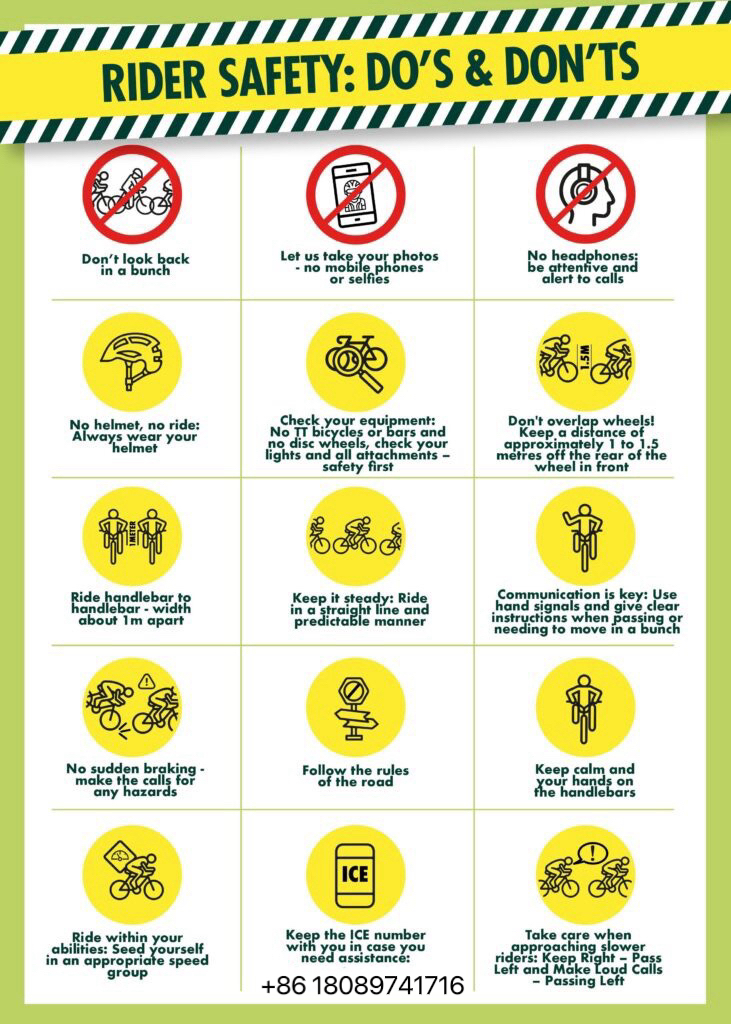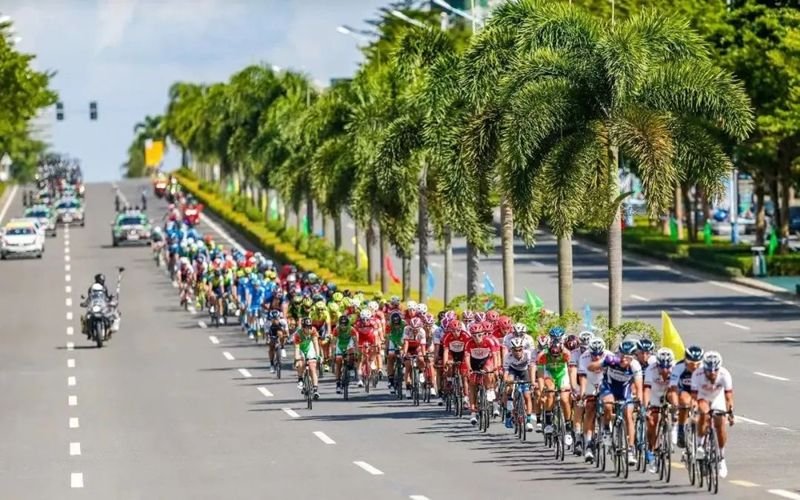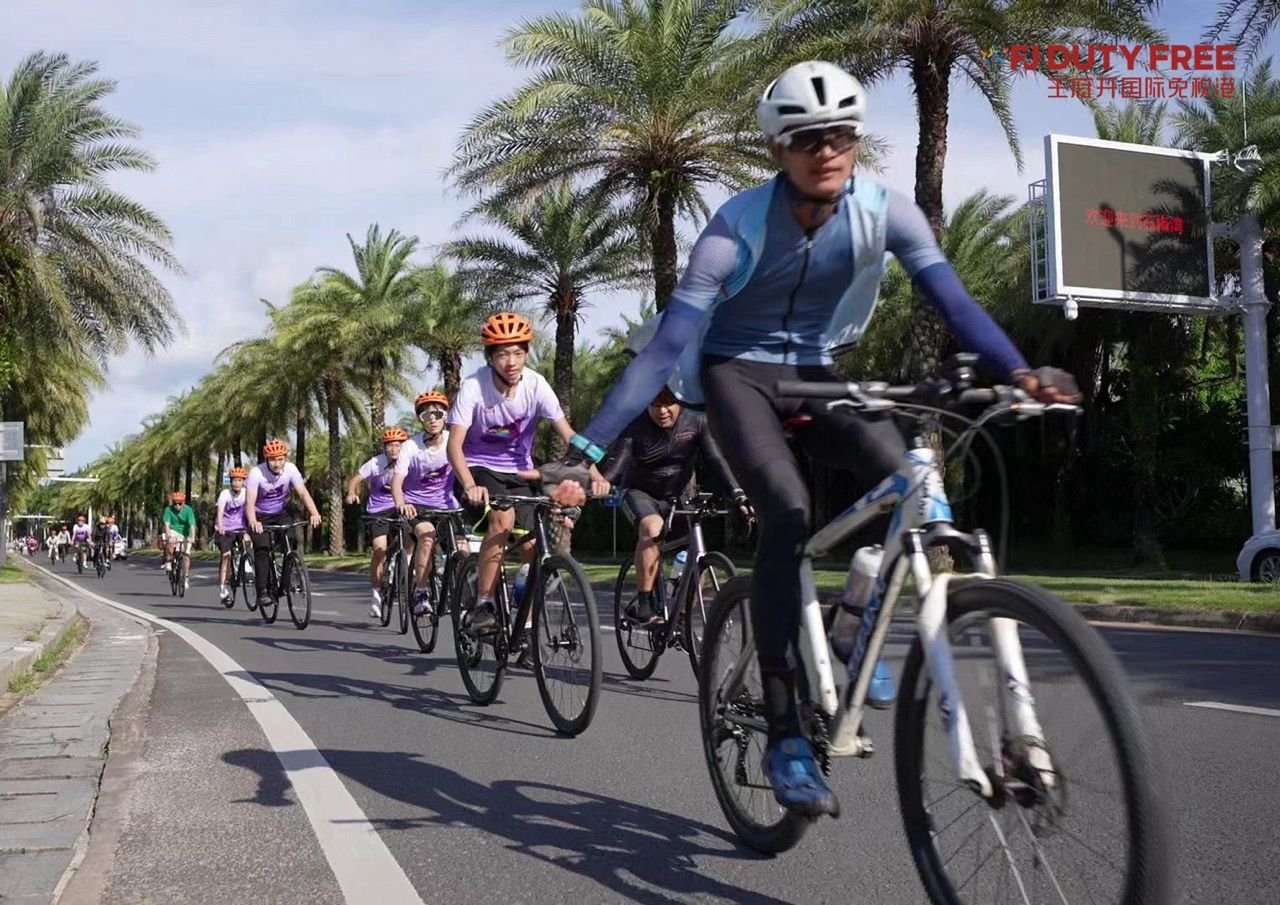RIDER SAFETY RULES AND REGULATIONS
Staging a Safe Ride for all participants is our main priority on all Fun Rides and UCI Gran Fondo Hangzhou Xiang Lake (ITT 16km ) & Qiandao Lake Age Group 136km
Acceptance of Rules & Regulations
In order to proceed with your registration you have to confirm that you have read and understood the event rules and regulations listed below and will abide by these rules and regulations for all associated events in the 15th Edition of the Spinneys Dubai 92 Cycle Challenge.
Age Calculation
The riders age for ALL events in this series is set in line with the UCI Gran Fondo qualifying age eligibility which is defined by the rider´s age on December 31st of the year of the qualifier event (6th and 7th September 2025), in this case 31 December 2025.
Riders Age / Category
Riders Age / Category = Rider’s age on 31 December 2025
Timing Chips
Timing Chips – The events will be timed using rental chips only. These Timing Chips will be provided prior to each event in your race pack on per event rental basis and will need to be returned to the organisers at the finish recovery area of each ride. Failure to do so may incur a time penalty and you will need to pay the replacement fee of AED 300 for the lost chip, this will need to be paid prior to collection of your race pack for the following event.
Not Permitted:
The following is not permitted, and penalties may be imposed at the sole discretion of the organiser:
Headphones – Strictly No headphones allowed whilst riding, be attentive and alert to calls
Using your mobile phone or taking selfies whilst riding – Let us take the photos.
Making contact with any other rider whilst on the bike
Physical contact with another rider with the intention of causing harm is strictly forbidden
No helmet no ride
Solid disc wheels, TT Bikes, TT Bars and aero bars are not allowed
E-bikes or motors, only 100% human powered bikes are permitted
Littering
Carrying or wearing another riders timing chip during the ride
When a seeded rider starts in an earlier group than their allocated / allotted seeding
Rider Safety, Etiquette and Unsportsmanlike Conduct – All participants are to agree to act in accordance with acceptable Rider Etiquette. The following acts are deemed unfair or unsportsmanlike or potentially unsafe conduct in terms of this event and is strongly discouraged and the organisers reserve the right to sanction participants for flagrant violation of these etiquettes:
Looking back in a bunch – don’t look back in a bunch this can cause and accident
Not holding your line – keep it steady, ride in a straight line and a predictable manner
Breaking suddenly without warning
Overlapping wheels – Don’t overlap wheels! Keep a distance of approximately 1 to 1.5m off the rear of the wheel in front
Sandbagging – on chip time format hanging back at the start to gain an unfair time advantage
Blocking – Deliberately Blocking
Being rude to marshals, race officials or other riders
Etiquette
Communication is key – Use hand signals and give clear instructions when passing or needing to move in a bunch.
Hand signals & Calls – know your hand signals and calls and practice them on training rides Essential guide to road cycling hand signals and cal… (roadcyclinguk.com)
Ride handle bar to handlebar, a safe distance apart
Hold your line – keep it steady, ride in a straight line and a predictable manner
No Sudden breaking – make the calls for any hazards
Follow the rules of the road and course signage
Always keep both hands on your handlebars
Ride within your abilities – Seed yourself in an appropriate start group
Keep the ICE number with you in case you need assistance: 056 211 4374
Take care when approaching slower riders – Keep right pass left and make loud calls – PASSING LEFT
Appeal Process
You may appeal a result or contest rider behaviour, by following the appeal process
Appeal Process – Any rider wishing to lodge an official appeal against another rider will nees to complete the appeal form, sign and pay AED 100 deposit for the appeal to be considered
Appeal Form – The appeal form will be provided as a downloadable digital form and hard copy form at each event at the information stand within the finish village.
Appeal Deposit – To lodge an official appeal, the rider will need to pay AED 100 deposit, should the offender be found guilty, the deposit will be returned to the appealer. Should the offender be found not-guilty, the deposit will be retained by the organisers
Team Entry Process:
To enter a Team please follow this link: (This link will be shared when we launch online entries) A Team leader will need to have all team member details to hand when registering their team online through the entry platform.
For assistance in registering a team, please contact info@ucigranfondochina.com
Rider Eligibility
Age Eligibility for UCU Gran Fondo Qualifier Races is: 19+ years
Gender: There are no gender-based team categories, therefore a team may consist of all males, all females or mixed male and female.
Elite Status: Team members do not need to hold a valid Elite License; however only valid UCI License holders will be eligible to start in the Elite Start Group on the main event race day if they have qualified to do so. All non-license holders will start in one of the open seeded groups according to their seeding taken from the Build-Up Rides. (This rule needs CLEAR clarification – on the “if they qualified to do so” point)
Scoring & Results
All riders in a team need to ride with their allocated timing chip. Seeded Teams will start separate from rest of field for safety reasons Race Team v Social Team entry , Race teams will start in the front group, Social Teams are riding for the social and personal achievement, will start within their relevant speed group according to their seeding. The team´s time for each event is taken from the 4th team member to cross the finish line At least 4 riders in a team need to finish each event in order to stay in the competition If less than 4 riders in a team finish an event, the team will be scored as DNF and will be out of the team competition Each member of the team will still be eligible to compete in the individule as they finish each race. All safety rules remain applicable across all events.
NOTE: The below infographic serves a a is a helpful visual summary reminder of some of the basic rider safety rules, however all rider rules and regulations are included above and need to be read, understood and followed by all participants, failing which, the organiser reserves the right to issue time penalties, disqualifications and/or fines to any offending rider.

Cycling Safety: Essential Tips for a Safe Ride
Cycling is a great way to stay fit, enjoy the outdoors, and commute sustainably. However, staying safe on the road is crucial to ensure a positive riding experience. Whether you're a seasoned rider or a beginner, following key safety tips can help protect you from accidents and make cycling enjoyable for everyone.



1. Wear a Helmet
Wearing a properly fitted helmet is one of the most effective ways to protect yourself from head injuries. Make sure your helmet:
- Fits snugly without moving around.
- Sits level on your head, covering your forehead.
- Straps are tightened securely under your chin.
- Meets safety standards (look for certifications like CPSC or EN1078).
2. Check Your Equipment
Before each ride, ensure your bike is in good working condition:
- Brakes: Test both front and rear brakes to make sure they stop the bike effectively.
- Tires: Check tire pressure and look for any signs of wear or punctures.
- Chain: Ensure the chain is lubricated and not too loose.
- Lights and Reflectors: If riding in low-light conditions or at night, make sure your bike has front and rear lights, and consider wearing reflective gear.
3. Be Visible
Visibility is key to staying safe, especially in traffic. Cyclists can be hard to see, so make yourself noticeable by:
- Wearing bright or reflective clothing.
- Using reflective tape on your bike and gear.
- Having lights on your bike, including a white light for the front and a red light for the rear.
4. Follow Traffic Laws
Cyclists must follow the same rules of the road as drivers. This includes:
- Obeying traffic signals and stop signs.
- Riding in the same direction as traffic, not against it.
- Using bike lanes where available, or staying to the right-hand side of the road if there’s no designated lane.
- Yielding to pedestrians and staying cautious in high-traffic areas.
5. Use Hand Signals
Communicating with other road users is essential for safety. Use hand signals to indicate your intentions:
- Left turn: Left arm extended straight out.
- Right turn: Left arm bent upward at the elbow, or right arm extended straight out.
- Stopping: Left arm bent downward at the elbow.
6. Stay Alert and Avoid Distractions
Keeping your focus on the road is critical. Avoid:
- Listening to music with headphones that block surrounding sounds.
- Using your phone while riding.
- Engaging in any activities that could take your attention away from the road and nearby vehicles.
7. Ride Predictably
Erratic or unpredictable movements can confuse drivers and lead to accidents. Always:
- Ride in a straight line, avoiding sudden swerving.
- Don’t weave between cars or lanes.
- Make your turns deliberate and well-signaled.
8. Know and Avoid Road Hazards
Be aware of potential hazards on the road that could cause a fall or accident:
- Potholes: Ride around them or slow down if unavoidable.
- Debris: Be cautious of glass, rocks, and other debris on the road.
- Railroad tracks: Cross at a right angle to avoid slipping.
- Wet surfaces: Reduce speed and be careful on wet roads, as they can be slippery.
9. Ride Defensively
Assume that drivers may not always see you. Stay prepared for the unexpected by:
- Maintaining a safe distance from parked cars to avoid "dooring" (when a car door opens suddenly in front of you).
- Being cautious at intersections, as drivers may not always yield to cyclists.
- Making eye contact with drivers when possible, especially at intersections or when merging.
10. Stay Educated
Continually improving your knowledge of cycling safety can reduce risks. Consider:
- Taking a cycling safety course.
- Staying updated on local laws and infrastructure changes, such as new bike lanes or regulations.
- Sharing knowledge with fellow cyclists to help promote a culture of safety.
Additional Tips for Specific Conditions:
Night Riding:
- Use bright headlights and rear lights.
- Wear reflective clothing to ensure maximum visibility.
- Ride slower, as visibility is reduced.
Group Riding:
- Communicate clearly with hand signals and verbal cues.
- Ride in a straight line and maintain a consistent speed.
- Use a single-file or double-file formation based on traffic rules and road conditions.
Cycling with Children:
- Equip children with properly sized helmets and bikes.
- Teach them to follow traffic rules and be aware of their surroundings.
- Supervise closely in busy or unfamiliar areas.
By following these safety tips, you can significantly reduce the risk of accidents and injuries while cycling. Staying aware, visible, and prepared are the best ways to ensure that your rides are enjoyable and safe for everyone.


